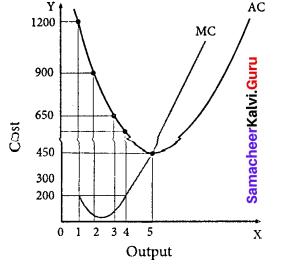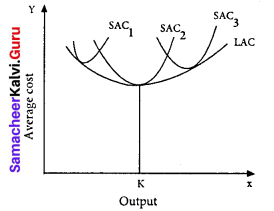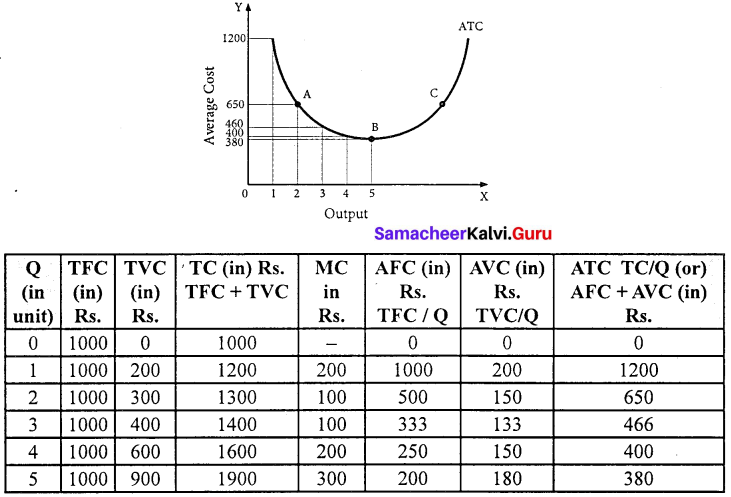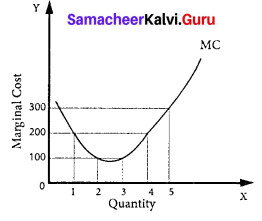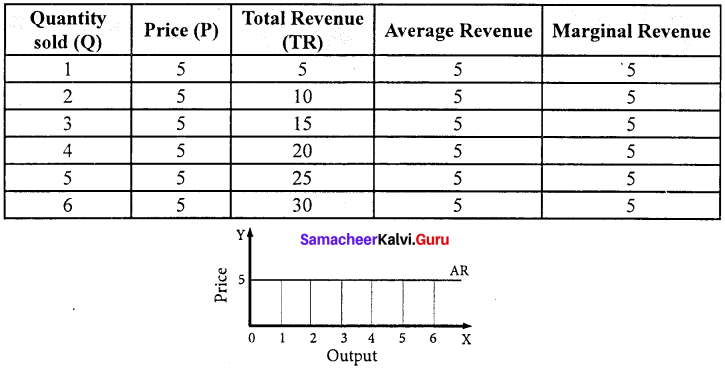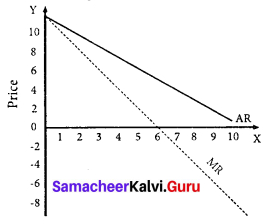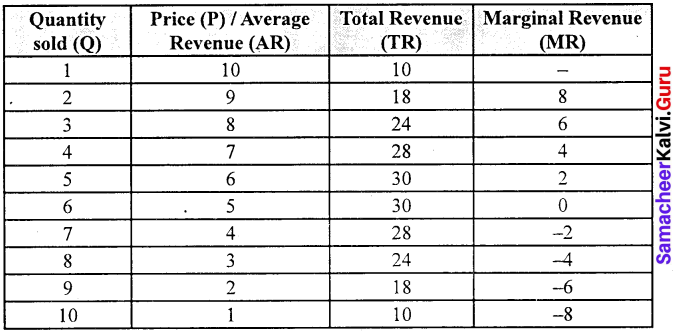Samacheer Kalvi 11th Commerce Solutions Chapter 26 Export and Import Procedures
Students can Download Commerce Chapter 26 Export and Import Procedures Questions and Answers, Notes Pdf, Samacheer Kalvi 11th Commerce Book Solutions Guide Pdf helps you to revise the complete Tamilnadu State Board New Syllabus and score more marks in your examinations.
Samacheer Kalvi 11th Commerce Solutions Chapter 26 Export and Import Procedures
Samacheer Kalvi 11th Commerce Export and Import Procedures Textbook Exercise Questions and Answers
I. Choose the Correct Answer
Question 1.
EPC stands for ………………
(a) Export processing commission
(b) Export Promotion Council
(c) Export Carriage council
(d) Export Promotion Congress
Answer:
(b) Export Promotion Council
Question 2.
STC is an expansion for ………………
(a) State Training Centre
(c) State Trading Centre
(b) State Training Council
(d) State Trading Corporation
Answer:
(d) State Trading Corporation
![]()
Question 3.
An ……………… is a document prepared by the importer and sent to the exporter to buy the goods.
(a) Invoice
(b) Indent
(c) Enquiry
(d) Charter Party
Answer:
(b) Indent
Question 4.
The ……………… receipt is an acknowledgment of receipt of goods on the ship issued by the Captain.
(a) Shipping Bill
(b) Bill of Lading
(c) Mate’s Receipt
(d) Consular Invoice
Answer:
(b) Bill of Lading
Question 5.
The Exporters appoint the agent to fulfill the customs formalities.
(a) Clearing Agent
(b) Forwarding Agent
(c) Commission Agent
(d) Factor
Answer:
(b) Forwarding Agent
II. Very Short Answer Questions
Question 1.
What is meant by Indent?
Answer:
An indent is an order received from abroad for the export of goods. It contains information regarding the sale of goods. it is prepared in duplicate. One copy of the indent is sent to the exporters and the second one is retained by the importer and kept in his records.
Question 2.
Write any two export promotion institutions.
Answer:
- Department of Commerce
- Export Promotion Council (EPC)
![]()
Question 3.
Mention the types of Indent.
Answer:
A charter party is a formal agreement between the shipowner and the exporter under which the exporter hires an entire ship or a major part of the ship either for a particular voyage or for a specific time period when the shipping is heavy.
Question 4.
What is the Letter of credit?
Answer:
Mate’s Receipt is the document issued by the captain of the ship acknowledging the receipt of goods on board by him to the port of specified destination. This contains details like quantity of goods shipped, number of packages condition for packing, etc.
Where the Mate is satisfied with packing he/she issues a clean receipt. If he/ she is not satisfied with packing, he/she issues a foul receipt. The forwarding agent should seek to get a clean receipt. Otherwise, the insurance company will not bear liability for loss in case of foul receipt.
III. Short Answer Questions
Question 1.
What are the contents of Indents?
Answer:
Contents of an Indent:
- Quantity of goods sent
- Design of goods
- Price
- Nature of packing shipment
- Mode of shipment
- Period of delivery
- Mode of payment
Question 2.
What is the meaning of a consular invoice?
Answer:
Where the customs duties are charged on the basis of value of goods at import’s port (ad – valorem basis), the customs officers are empowered to open the consignment to calculate duties. In order to avoid this problem exporter obtains consular invoice and sends it over to the importer.
Question 3.
What is meant by Charter Party?
Answer:
A charter party is a formal agreement between ship owner and the exporter under which exporter hires an entire ship or a major part of ship either for a particular voyage or for a specific time period when the shipping is heavy. The hiring of ship for specific voyage is called voyage charter while this hiring of entire ship for a specific time period is called time charter.
![]()
Question 4.
Write a short note on Mate’s receipt?
Answer:
Mate’s Receipt is the document issued by the captain of the ship acknowledging the receipt of goods on board by him to the port of specified destination. This contains details like quantity of goods shipped, number of packages condition for packing, etc.
Question 5.
What is Bill of Lading?
Answer:
Bill of Lading, refers to a document signed by ship owner or to his agent mentioning that goods, specified have been received and it would be delivered to the importer or his agent at the port of destination if good condition subject to terms and conditions mentioned therein.
IV. Long Answer Questions
Question 1.
What are the procedures relating to Export trade?
Answer:
An exporter has to fulfill the formalities given below to export the goods out of the country:
Receiving Trade Enquiry Exporter receives trade enquiry (written request) from the importer / his agent who intends to buy the product. In the first place, the importer requests the exporter to supply the information with regard to the products.
Receiving Indent and Sending Confirmation:
After the scrutiny of the quotation / proforma invoice, the buyer who intends to buy the goods sends an indent to the exporter. The latter may either receive the order directly from the importer or through an agent who acts as an intermediary between the exporter and the importer.
The agent receives a commission for this intermediating sendee. An indent actually points to an order received from abroad for export of goods, i.e. sale of goods. The indent contains the details in the box.
Arranging Letter of Credit:
Under this stage exporter intends to satisfy himself/herself about the trustworthiness of the importer. In this case the exporter is requested to arrange a letter of credit in his favour. Letter of Credit (LC) is an undertaking by its issuer (importer’s bank) that bills of exchange drawn by the foreign dealer on the importer will be honoured upon its presentation by exporter’s bank up to a specified amount.
In other words it simply represents a guarantee given by the importer bank to the foreign dealer (exporter) that the amount in the bill will be honoured upon its presentation by the exporter /his agent.
Obtaining Importer Exporter Code (IEC) and RBI code:
Number Exporter has to apply in Ayaab Niryatt Form 2A(ANF2A) to the Regional Authority of the Director-General of Foreign Trade (DGFT) in the region where the registered office of the company is located. The exporter has to mention the number in all the shipping documents.
However, IEC number is not required where the goods are exported/imported for the personal use of importer and not for trade/ manufacture or agriculture purpose.
Obtaining Registration cum Membership Certificate (RCMC) from Export Promotion Council / Commodity Board:
An Exporter is required to obtain RCMC from Export Promotion Councils/ Commodity Board/Development Authority in order to avail himself/herself of export incentives, concessions, and other facilities offered by Government e g. cash compensatory support and benefit of the promotional scheme from Government.
Manufacturing / Procuring Goods and Packing items:
Exporters steps into manufacturing and procuring of goods required by the importer. Where the materials required for the manufacturing of goods are subject to excise duty. the exporter has to apply to Export Commissioner for exemption from excise duty if the goods are meant for export along with the invoice AR4/AR5 and other documents.
Export Inspection Certificate:
After the goods have been packed as per the specifications of importer, the exporter has to apply to the Export Inspection Agency (EIA) or other designated agency in this connection The agency sends an inspector to inspect the consignment meant for export. If the inspector is satisfied with the packing he/she issues certificate mentioning that. goods exported adhere to specification made by the exporter.
Insurance of Goods:
Exporter has to arrange for getting the goods insured to protect them against the various risks like deterioration, collision, immersion, fire, entry of seawater etc., as per the instructions of importer if any.
Certificate of Origin:
Import regulation of foreign countries may require that all these import consignments must accompany a certificate of origin. This certificate certifies that goods which are exported have been manufactured in a particular country. In India, the Chamber of Commerce, Trade Association, Export Promotion Council have been empowered to issue such certificates.
Consular Invoice:
Where the customs duties are charged on the basis of value of goods at import’s port(ad-valorem basis), the customs officers are empowered to open the consignment to calculate duties. This document is signed by the consul of importer’s country stationed in exporter’s country.
Engagement of Forwarding Agent
After Export Inspection certificate is obtained, the exporter has to obtain clearance from customs authorities. Generally exporters engage Clearing Forwarding Agent to fulfill various custom formalities. The latter do it for fees.
12. Dispatch of Goods to Port and Sending the Receipt to Agent The exporter will send the goods over to port town by rail or by truck and endorse the Railway Receipt (R/R) or Lorry Receipt(L/R) to forwarding agent’s favour with necessary instructions.13. Fulfilment of Customs Formalities by Forwarding Agent.
Customs Clearance
The exporter or his agent prepares three copies of shipping bill in printed form. The shipping bill contains the details like name and address of exporter, description of goods, value of goods, volume of goods, identification marks on the goods, port of destination and port of loading.
Preparation of Commercial Invoice and Submitting Documents to Bank
The exporter prepares a commercial invoice in respect of the goods shipped in triplicate according to the terms and conditions agreed between the exporter and the importer.
Then the exporter submits all related documents like commercial invoice, insurance policy, certificate of origin, consular invoice, etc., to his bank for onward transmission to the importer’s bank with the instruction that their documents should be delivered to the importer only when he accepts the bills enclosed
Securing Payment:
Bills of exchange of can are two types
- Document against payment (D/P)
- Document against acceptance (D/A)
Question 2.
Distinguish between Bill of Lading and Charter Party.
Answer:
| Basis | Bill of Lading | Charter Party |
| 1. Meaning | This represents a document acknowledging receipt of goods on board for carrying them over to specified port of destination. | It refers to an agreement to hire a whole or major part of ship when the goods take exported is heavy. |
| 2. Transferable | It Can be transferred to third party by endorsement and delivery. | It cannot be transferred to third party. |
| 3. Loan | Loan can be raised against it. | Loan cannot be raised against it. |
| 4. Crew | Master and crew remain the agent of ship owner. | Master and crew become the agent of exporter for a temporary period. |
| 5. Lease | It is not a lease of ship. | It is a lease of ship. |
Question 3.
What are the documents used in Export Trade?
Answer:
The following are the Documents used in Export Trade:
A. Documents related to Goods:
- Indent
- Certificate of Origin
- Certificate of Inspection
B. Documents related to shipment:
- Mate’s receipt
- Shipping bill
- Shipping Order
- Bill of Lading
- Marine Insurance Policy
- Consular Invoice
- Railway receipt/Lorry receipt
C. Documents related to Payment:
- Letter of Credit
- Commercial Invoice
- Bills of Exchange
- Bank Certificate Payment
![]()
Question 4.
Explain the various functions of Export Trading Houses.
Answer:
The functions of the export house are mentioned below:
- Identifying a potential market for a product
- Finding buyers and their agents and eliciting their response for export proposal.
- Establishing product specifications in the light of market needs, standards and regulations in accordance with suppliers’ capabilities.
- Determining appropriate mode of transportation and routing keeping in mind the cost, quality of service, and security.
- Preparing the goods for delivery at destination.
- Determining buyer’s creditworthiness.
- Negotiating the transactions.
- Arranging proper insurance coverage against maritime risks and currency fluctuations.
- Financing the transactions and paying for goods and services received.
- Preparing documents for international trade.
- Settling claim.
